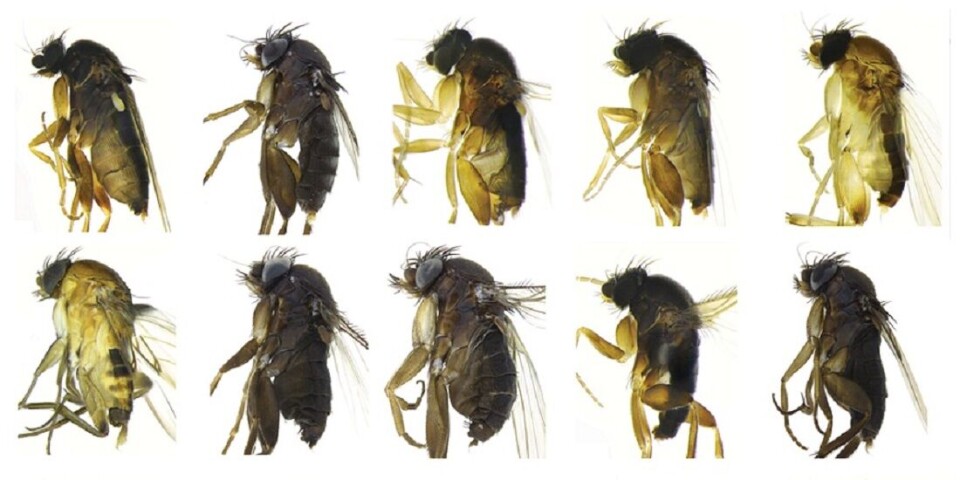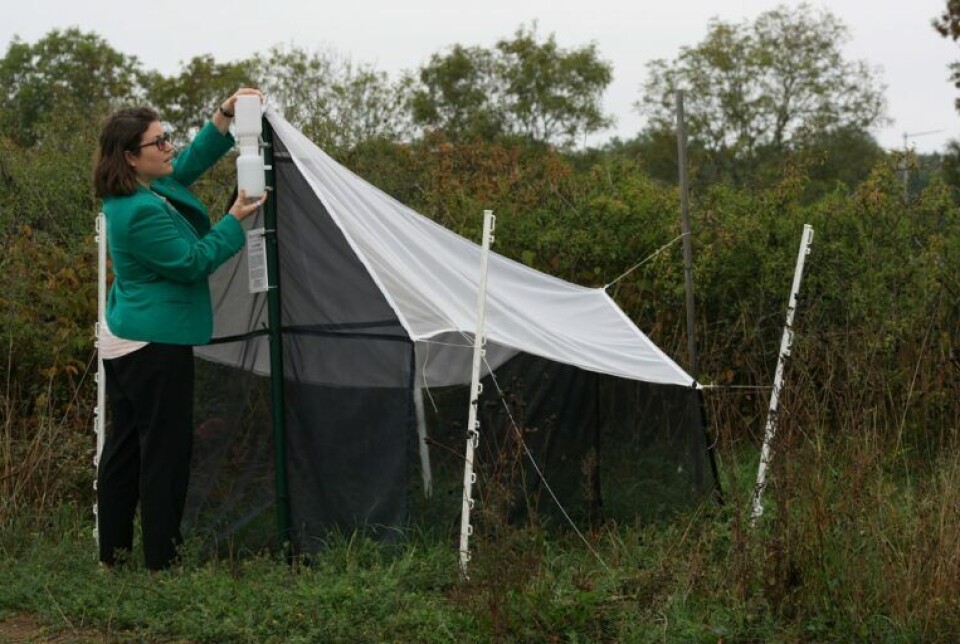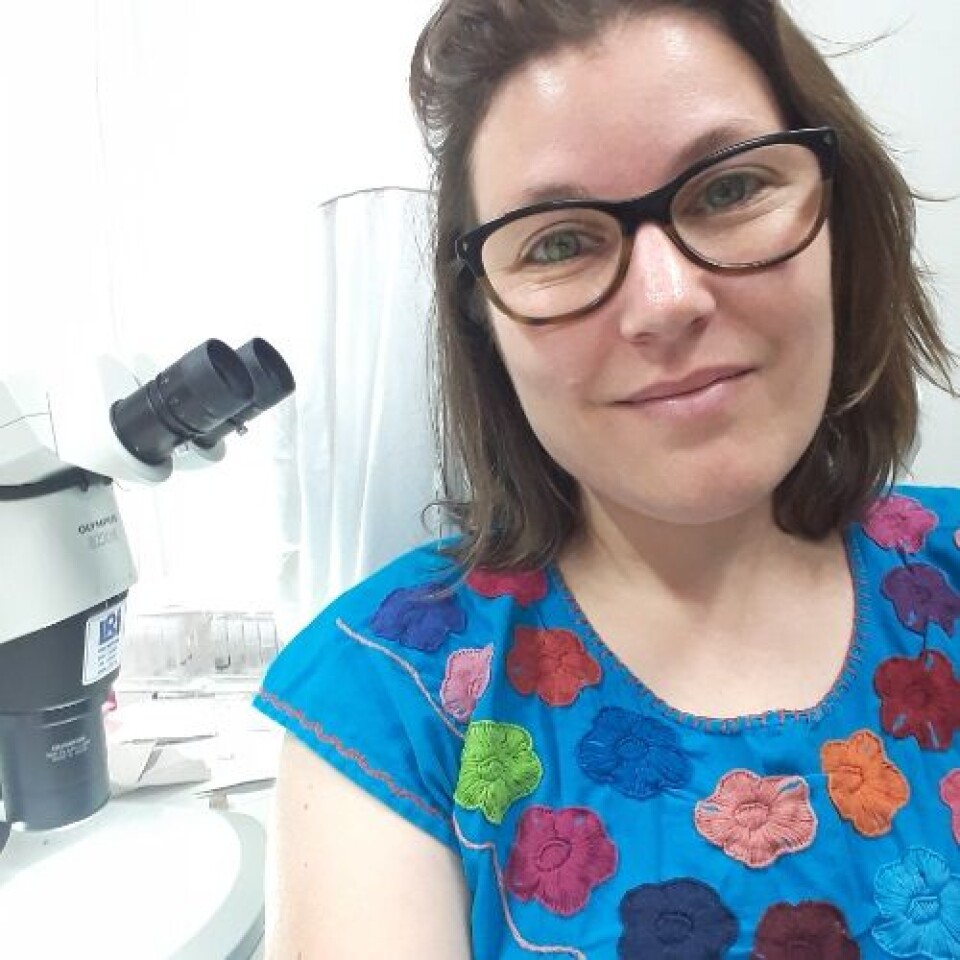THIS CONTENT IS BROUGHT TO YOU BY NTNU Norwegian University of Science and Technology - read more

Millions of Earth's species remain unknown to us. Can we still identify them?
New methods may provide us with a better overview more quickly.
The Earth is an almost unimaginably diverse planet in terms of species. Researchers have identified between two and three million species. But there are many more that we know nothing about.
The unknown species are called biological dark matter, borrowing a term from astrophysics. Dark matter is matter in the universe that does not emit radiation, and therefore cannot be observed directly.
“We want to demonstrate how we can gain a better overview of biological dark matter by using DNA barcoding,” said researcher Emily Hartop.
DNA barcoding sounds mysterious, but it actually isn't. More on that later. First, let us take a look at why we do not know enough yet.
Why some species remain unknown
Hartop works at the NTNU University Museum's Department of Natural History, surrounded by colleagues who are also used to discovering new species. They are unlikely to run out of new tasks anytime soon.
Hartop explains that biological dark matter is often found in groups with many species that have not been thoroughly studied yet.
There are many reasons we do not know more than we do. Some of these reasons are purely practical.
Many unidentified species are found in the ocean or in other parts of the world that are difficult for researchers to access. Not all of these species are found in great numbers either, so encountering them is rare.

But that is not the whole explanation. Even in regions of the world with dedicated researchers for hundreds of years, like Europe and North America, we are still far from having a complete overview.
“These unknown species can be found everywhere,” said Hartop.
A huge task and not enough experts
A shortage of researchers trained in this field is undoubtedly a problem. The task is simply so large that there are not enough experts for the workload.
A common estimate is that there are nearly nine million species, though we do not know for sure. This figure does not include bacteria and other single-celled organisms. In any case, there is still much more left to discover than what we already know.

Identifying a species is not something just anyone can do. There are many species out there that most people would think look identical.
New method makes the job easier
Fortunately, biologists have started using an efficient new method in recent years: DNA barcoding.
“In DNA barcoding, you only need a tiny bit of DNA to identify a species,” says Hartop.
This small DNA sequence can then be compared against a database of DNA from species that have already been described and recorded.
To confirm a new species, the DNA archive must have a complete reference set of known species in the group being compared. Building this reference library is ongoing in national and international projects.
Large numbers of unknown insects found
This time, researchers focused on insects in Sweden. They collected flies from 37 different habitats across four seasons. They ended up with 31,800 DNA samples for analysis, and found quite a number of species.
“For example, we found 549 different potential species of scuttle fly. This is a surprisingly high density and diversity,” says Hartop.
Previously, only 374 species of scuttle fly (Phoridae) were known, meaning that 175 of these species were new to Sweden.
Environmental variations affect species composition
The material also allows researchers to study how environmental variations affect species composition in an area.
“With regard to scuttle flies, we see that the prevalence of the different species is influenced by climate factors. For example, it appears that 29 per cent of the species respond positively to an increase in average temperature, while 18 per cent respond negatively,” says Hartop.
Important to quickly establish an overview
“It’s important that we have an overview of the biodiversity around us. This means that we have to study inconspicuous, but species-rich groups. We live in a time where biodiversity is under threat, including unknown species,” says Hartop.
According to IPBES, the international panel on biodiversity, the greatest threat to biodiversity is habitat loss due to development or wetland drainage.
The second biggest threat is the exploitation of species, such as hunting for bush meat, logging, or overfishing.
Other threats include climate change, pollution, and the spread of species to areas where they do not belong.
Researchers believe these threats stem from an increasing human population with rising demands. It is essential to identify which species exist, making DNA barcoding even more vital.
“We see that this method can help us to quickly and efficiently gain an overview of the species. The time is ripe to explore biological dark matter,” she concludes.
Reference:
Hartop et al. Resolving biology’s dark matter: species richness, spatiotemporal distribution, and community composition of a dark taxon, BMC Biology, 2024. DOI: 10.1186/s12915-024-02010-z
———
Read the Norwegian version of this article on forskning.no
More content from NTNU:
-
Why are pregnant women in Norway so worried?
-
Politics on Facebook: Populist parties choose divisive issues on purpose
-
Social media is connected to cyberbullying – but not how we thought
-
Forskere ved NTNU får nesten 24 millioner av EU for å lage nye strømomformere
-
This helps the youngest children enjoy school more
-
Can we tap the ocean’s power to capture carbon?





































